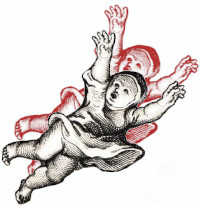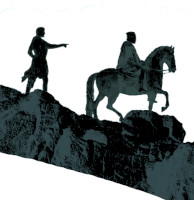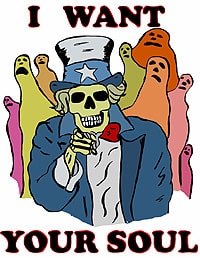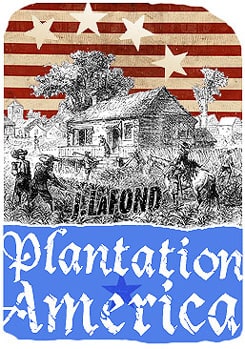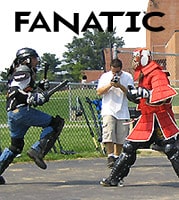With near future science-fiction there is a high probability of being off on your predictive setting, such as happened with George Orwell, with the events he predicted for 1984 not generally coming to pass until 2020, and Author C. Clarke's 2001 a Space Odyssey exactly 20 years in our rear view with human space exploration still less advanced then when Clarke wrote his novel in the late 1960s [I think, from memory that it was made into a 1971 movie.]!
What is more, there is a chance of being right [like the French author of that novel Camp of the Saints, all of the dissident right people want to read, about Indians immigrating en masse to Europe] or of being flat wrong in your lifetime, like most near future movies like Red Dawn [the opposite was obvious and did occur] and a legion of movies that have very short time spans between their making and the date they choose to place the future change.
Yet, it is such writing that sells, predicting a radically divergent future that is set too close to the present to be achieved in the intervening space. Something like Waterworld, Olympus Has Fallen and The Day the Earth Stood Still [the latter a rare actual quality piece of science-fiction] are gobbled up by the popular imagination, that being the shallow, subjective and fear-motivated mass imagination of those who watch movies rather than read.
Even good movies, like Minority Report and Blade Runner, have technologies like flying cars that any science-fiction writer, whose job is to track likely technological developments and their effect on society, knows dam well will not be developed in the time span between the making of the movie and the setting date. This is the art of selling, the craft of proposing impossible possibilities for the near future.
This sells, like the maker of that terrible movie Jango Unchained using 1870s firearms in the 1850s setting, just to up the body count and give the viewer an artifice fix.
Why don't I write like so?
I was rescued by youthful ennui by Robert E. Howard, a man in his 20s writing in the early 1930s, when I discovered his work in 1977, 41 years after his death. For that reason, when I wrote Last Whiteman in 2021, I placed it in 2068. I'm writing for a teenager alive in 2068 who I want to be impressed with how close I came to predicting his worldly condition. If I want to speak to that kid long after I am dead, it will help if he senses that I understood what kind of world he would be inhabiting, if only in certain crucial parts.
This recalls a phone conversation I had with my good friend Nero the Pict, about Last Whiteman:
“Bro, you called it! The way you have written the Baltimore of the future, with perfectly good buildings lying unused—buildings that were thriving businesses when I was a young dude—having tent cities and bazaars parked right in front of them. You know, today, when I was driving out Eastern Avenue, where that old Aimes used to be, where the entire strip mall [which once housed a Sam's Club grocer that I delivered Fritolay chips to] is abandoned, there was this massive tent flea market. Most of the people were unmasked, which was really cool to see after all of the weird mask behavior in Baltimore yesterday. A lot of those people were recent immigrants of color, just like in Last Whiteman.”
I had to come clean.
“Bro, remember when you were in Fell's Point in late July, when that storm roared through, that storm leveled that tent bazaar right after I walked past it. That was the day I wrote the weeds article about walking past the lame hawk perching on the curb when I was going out to the County to meet Brian and Jenn. I noted how much that looked like the tent cities in Portland, Eugene, Sacramento, Reno, where tents are propped right up against the walls of sky scrapers, municipal buildings, casinos and even churches and old storefront bars. I think that this is the beginning of a nomadic squatting trend that is going to be as persistent as white flight to suburbia has been from 1968 down to today, and is starting to replace it as a reverse migration.
“So I can't take credit for prediction, just observation. It also struck me how much that was like Howard's writing about civilization in one Conan yarn, where the barbarian is a young thief in an evil city and he wonders at philosophers arguing while beggars starve against the walls of palaces occupied by fat merchants. And since this story was an ode to Howard, and I tried to write as a 62-year-old him, it fit as a trend that he would predict as civilization goes into a down cycle and impoverishes the scions of those it had previously enriched on its upswing.”
In retrospect, after that audio pat on the back, I think this is even more going to be the future of U.S. Cities as squatter camps for refugees from ravaged shithole countries and soulless loophole suburbs alike. You now have dissolute and unemployed grandchildren of those white flight boomers and silent generation cucks, reverse migrating back to cities for access to government help, drugs and public transportation and walls to build tents up against instead of getting blasted by the winter wind in some open space.
I think that as this Ice Age encroaches and the masters crash the economy for whatever agenda they have, that the dispossessed are going to look to the shelter of the urban forest of stone, brick and concrete. Bob always jokes with me that they have no homeless population in the Rockies because even the professional hunters strike camp, packing up their wood stoves, in early November and head for the bottom lands before the winter cold requires them to do nothing but chop wood and eat to stay alive as icicles form inside of their military-grade shelters.
It seems likely, that as ever newer and more advanced buildings rise in American cities, that older buildings will serve as walls to lean a shelter against and keep off the north wind as more and more of us devolve into semi-nomadic migratory tent people and the young gods like Brill Yates reach for the stars within their vertical environment—their Proud Tower. I used this motiff in Haft and more explicitly in Beyond the Pale and Is You Sure?, my juvenile adventure book.
Such a vision of the near future, which I suspect will be more accurate than not, could never sell unless the postmodern tent imagery was used to cue on Biblical hope and serve as the setting for a second coming of The Christ. I will leave that for others to write, as I await the second coming of Thunderer, a somewhat less cheery tale to tell of.



